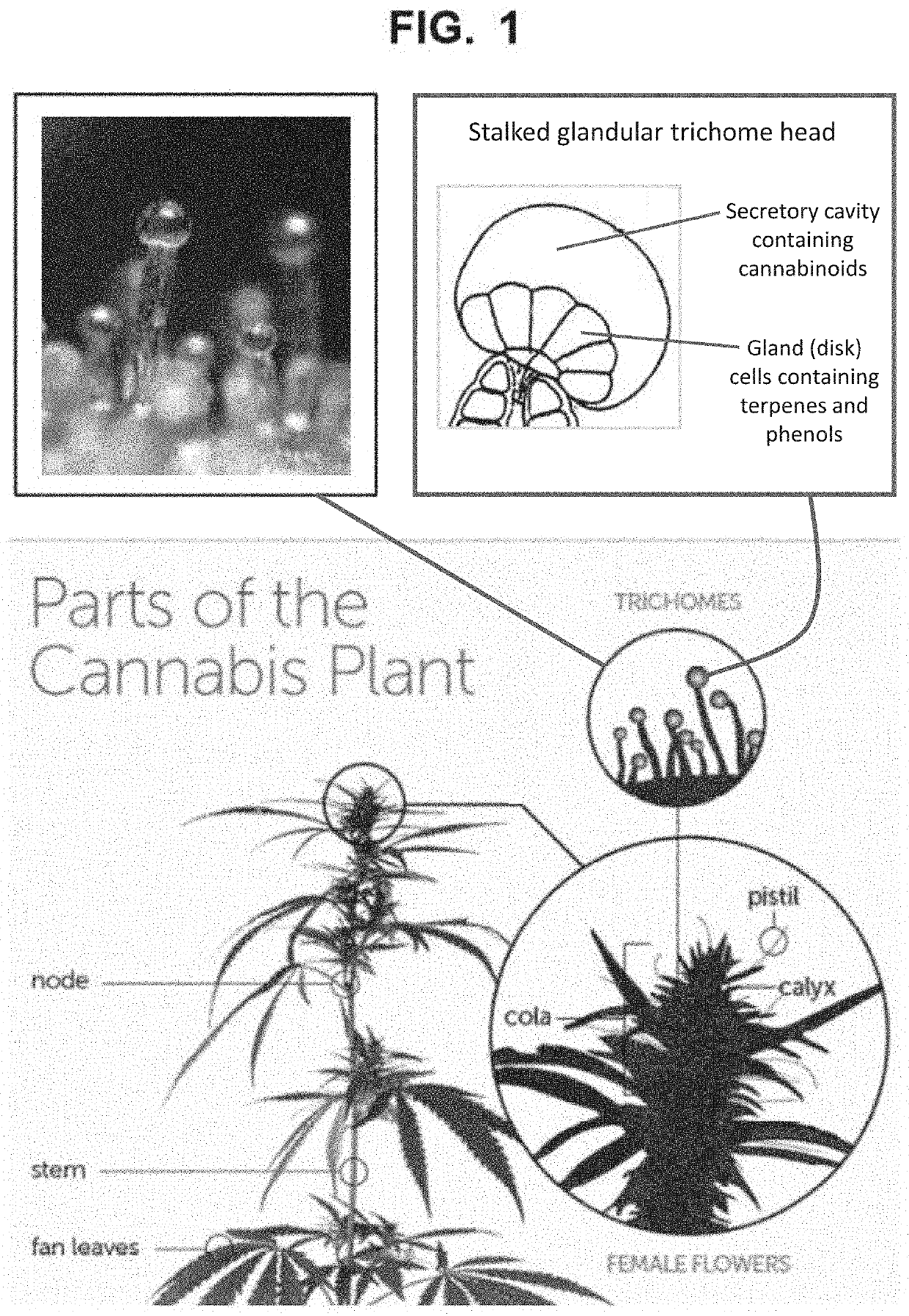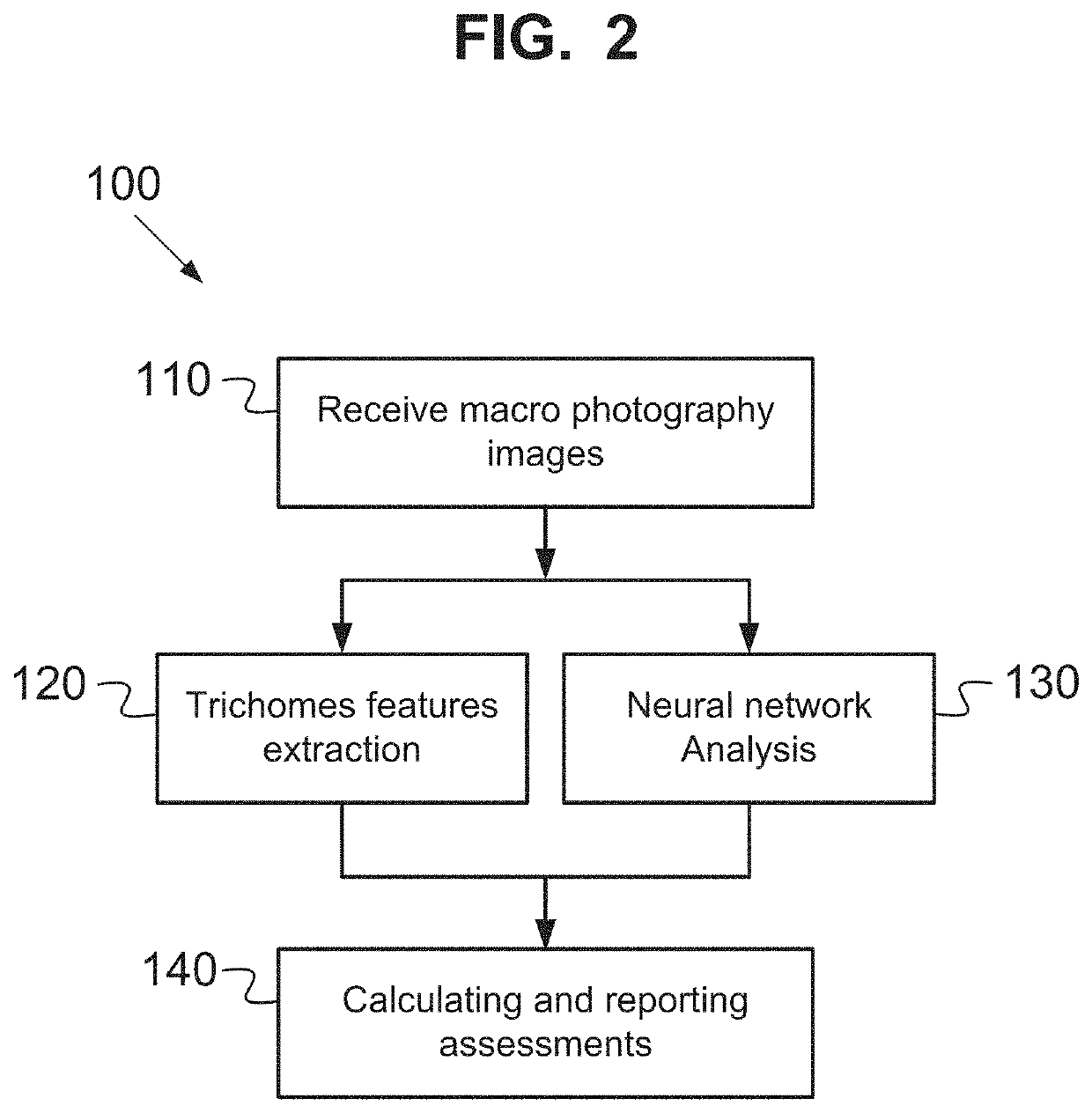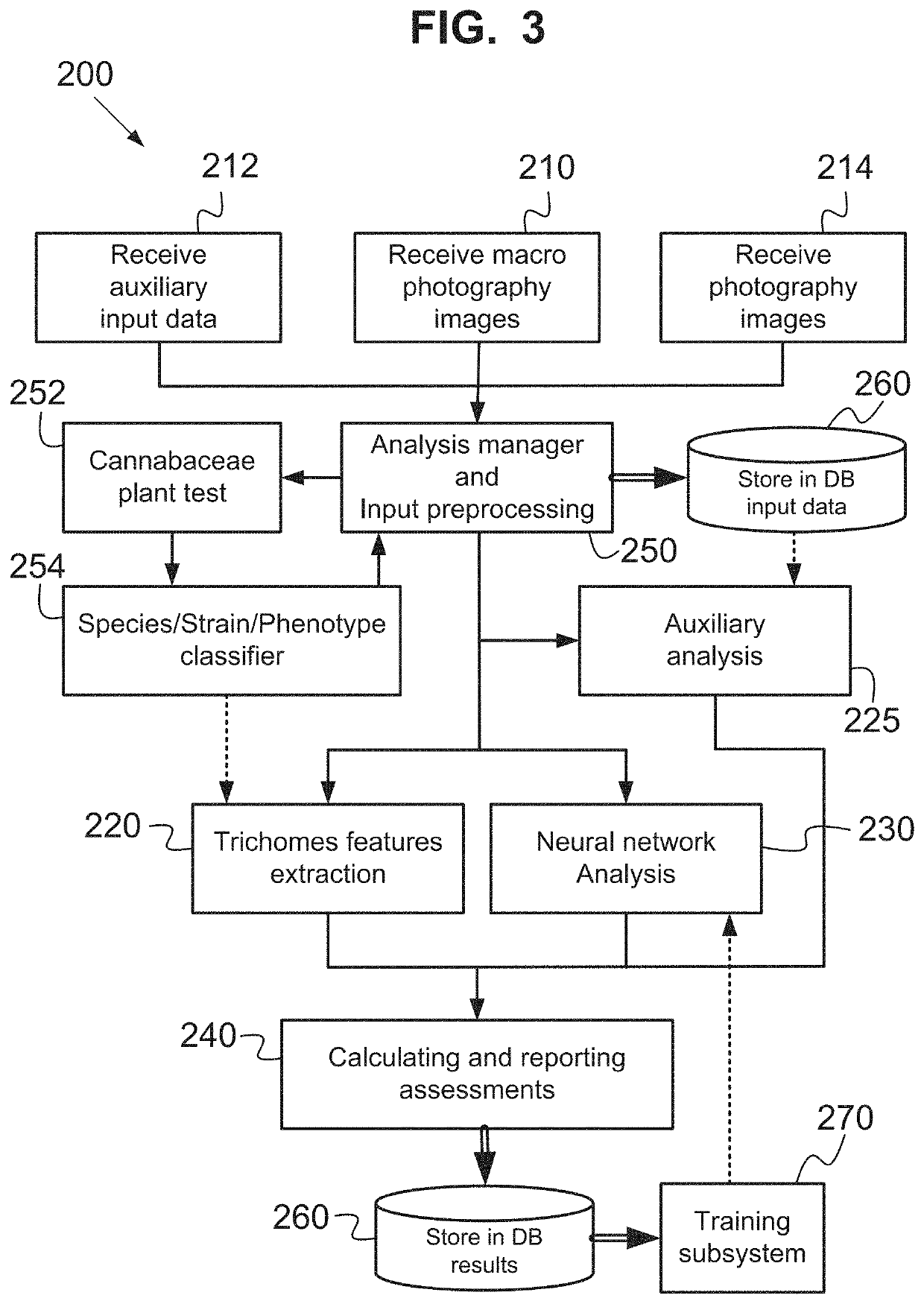A system and method for characterization of cannabaceae plants
a technology of cannabaceae and plant characterization, applied in soil-working methods, instruments, agricultural tools and machines, etc., can solve the problems of trichomes being extremely volatile, unable to evaluate a single plant, time-consuming and difficult to detect maturity levels,
- Summary
- Abstract
- Description
- Claims
- Application Information
AI Technical Summary
Benefits of technology
Problems solved by technology
Method used
Image
Examples
Embodiment Construction
[0069]The present invention, in some embodiments thereof, relates to a system and method for characterization of plants and, more particularly, but not exclusively, to a system and method for characterization plants that are members of the Cannabaceae family, and more specifically the genus of cannabis and the species of Cannabis sativa.
[0070]The invention provides a reliable, unbiased, automatic assessment of the status of plants that are members of the Cannabaceae family.
[0071]Some embodiments of the invention provide a system configured to diagnose Cannabis sativa plant status, automatically, by analysis of plant images, while accumulating the analysis' results in databases.
[0072]This is advantageous for evaluation of the plant, e.g. cannabis, for cultivation purposes, and to detect the chemical composition of the finished product. For cultivators such a decision support system may consist of at least one of: (a) determining the plant's maturity, (b) determining harvesting time,...
PUM
 Login to View More
Login to View More Abstract
Description
Claims
Application Information
 Login to View More
Login to View More - R&D
- Intellectual Property
- Life Sciences
- Materials
- Tech Scout
- Unparalleled Data Quality
- Higher Quality Content
- 60% Fewer Hallucinations
Browse by: Latest US Patents, China's latest patents, Technical Efficacy Thesaurus, Application Domain, Technology Topic, Popular Technical Reports.
© 2025 PatSnap. All rights reserved.Legal|Privacy policy|Modern Slavery Act Transparency Statement|Sitemap|About US| Contact US: help@patsnap.com



